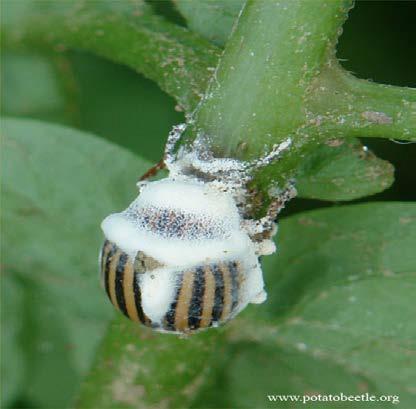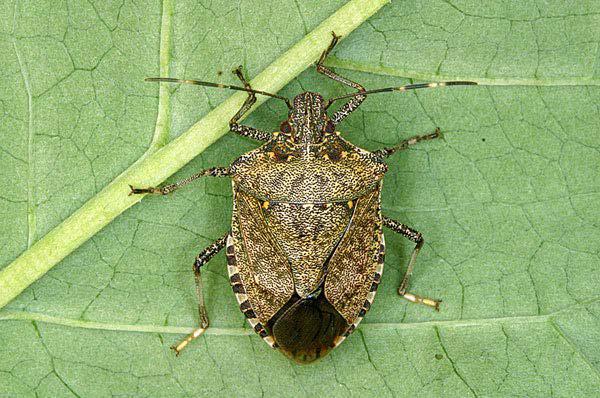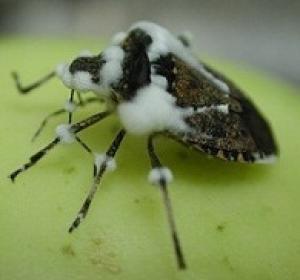Fungal Entomopathogens: An Enigmatic Pest Control Alternative Entomopathogens as Insecticides
Entomopathogens are bacteria, fungi, protozoans or viruses that can infect and subsequently cause disease in insects and other arthropods. They can indirectly impact cropping systems by serving as naturally suppressors of insect and mite pests. When there are epizootic outbreaks, entomopathogens are capable of causing rapid declines in large populations of their arthropod hosts. Many of these naturally occurring pathogens have been formulated and commercialized as insecticides. Among entomopathogens, fungi have garnered the most interest for research and use as biologically based insecticides. In 2006, 129 fungus-based insecticides (mycoinsecticides) were reported to have been developed for commercial use. Mycoinsecticides are considered environmentally friendly alternatives to synthetic chemical insecticides; and similar to other pesticides, mycoinsecticides can be administered by ground or aerial sprays as well as broadcasted or applied as dusts or granules. However, development, commercialization and use of mycoinsecticides are not always easy. Developers and users of these products must consider ecological, environmental and economic factors associated with their use to maximize their effectiveness.
Fungal Entomopathogens
Fungal diseases of insects (insect-pathogenic fungi - IPF) are common and widespread and contribute to the natural regulation of insect populations. Many insect pathogens (bacterial and viral pathogens of insects) must be eaten to infect their host but most fungal pathogens infect by contact and directly penetrate the insect cuticle (skin). Fungal pathogens are capable of forming spores. Insects can come in direct contact with fungal spores when spores land on the surface of their bodies or indirectly by touching a fungus-contaminated plant or soil surface. After coming in contact with the cuticle of a susceptible insect, fungal spores usually enter inside its body within 24 hours. Once inside, they reproduce and often kill the insect. Before death, some infected insects are liable to behavioral changes mediated by the entomopathogen. Some infected insects crawl to the top of the plant and face upwards. This increases the opportunity that spores which are produced within the insect’s body encounter additional insect host after being released into the environment.
Beauveria bassiana (Hyphomycetes) is a fungus(link is external) that grows naturally in soils throughout the world. It infects a wide range of immature and adult insects and is available commercially as a microbial insecticide. It causes a disease in insects known as the white muscadine disease. When fungal spores come in contact with the cuticle of insect hosts, they germinate on the cuticle and invade the insect body, usually by a combination of physical force and enzymatic action. There, the fungus multiplies throughout the insect's body, producing toxins and draining the insect of nutrients, eventually killing it. Once the fungus has killed its host, it grows back out through softer areas of the cuticle while covering the insect with white mold. This mold creates millions of new infective spores that are released into the environment. Figures 1 and 2 show a healthy Colorado potato beetle (Leptinotarsa decemlineata) and one that has been infected by the pathogenic fungus, B. bassiana. Figures 3 and 4 show a healthy brown marmorated stink bug (Halyomorpha halys) and one that has been infected by B. bassiana.
Effect of Chemical Pesticides on Fungal Entomopathogens
Chemical sprays can have a negative impact on IPF by killing or inhibiting fungal spores. Insecticide, fungicide and herbicide sprays can impact entomopathogenic fungi found in the soil and within the plant foliage. For instance, a fungicide used to kill or inhibit a fungi that is harmful to crops (plant pathogen), may kill fungi that infect insects. Among various pesticides, fungicides are thought to be the most detrimental to beneficial fungi activity and some studies have shown that fungicide applications disrupt the ability of naturally occurring fungal pathogens to control aphids. Therefore, caution should be taken before using pesticides especially fungicides when there is activity by beneficial pathogenic fungi in cropping systems. As studies have shown, if naturally occurring entomopathogens that help keep arthropod pests in check are suppressed by pesticides, this may lead to an outbreak of the pest’s population. Additionally, pesticides may impact entomopathogens indirectly by eliminating insect hosts that they need for further reproduction and disease transmission.
Factors Impacting the Use and Efficacy of Mycoinsecticides
The use of IPF as mycoinsecticides and part of a pest management program has received limited interest from producers. This may be credited partially to the fact that the ecology of fungi is not well understood compared to other biological control agents such as predators, parasitoids and bacteria based insecticides. Further, fungi are affected by a number of environmental factors including sunlight, rain, temperature, humidity and leaf surface chemistry all of which could impact its effectiveness in managing crop pests. Sunlight is a major mortality factor of fungal propagules (spores) and can lower the persistency of mycoinsecticides. Moreover, excessive rainfall or irrigation following a mycoinsecticide application can reduce its efficacy. Humidity is very crucial for fungal pathogens and though insects can become infected at lower humidity, high humidity is a general requirement for spore germination. Though ambient temperature influences the efficacy of fungal entomopathogens, different fungal pathogens vary in their temperature tolerance. Temperature can have a negative or positive impact on the germination and growth rate of fungal entomopathogens and is one of the most important factors impacting density of fungi in the soil. For example, high soil temperature can kill fungal spores.
Insect Behavioral Defense Against Pathogenic Fungi
Insects don’t have the privilege of visiting an insect clinic when they catch a fungal pathogen, and are predominantly dependent upon cuticular, humoral bodily fluids and cellular defenses to resist aggression by fungal pathogens. The cuticle is the primary and possibly the most important barrier to fungal infection. Fungistatic fatty acids, enzymes and melanin can help stop fungal penetration through the insect cuticle(link is external). However, if the pathogen is able to breach the cuticle, it still has to contend with the host’s immune system. Further, insects may change their behavior in response to a fungal infection. For example, some insects when infected by a pathogen, elevate their body temperature several degrees above ambient by directly or indirectly absorbing heat from the sun (e.g. basking) or from the plant in an attempt to fight off the pathogen. Basking behavior has been shown to reduce disease severity. Some refer to this as “behavioral fever” which may be defined as the elevation of body temperatures higher than normal levels using behavioral means.
How Can Entomophathogenic Fungi Activity be Enhanced
If entomopathogens are naturally occurring in agroecosystems, slight changes in crop husbandry practices could enhance their survival and activity density. There are several ways that cropping habitats may be manipulated to enhance the survival and activity density of naturally occurring fungal pathogens. High relative humidity is one of the most vital requirements for fungal activity. Generally, ambient humidity of greater than 90% is required for their germination, sporulation and infection. As such, activities that can be adopted to raise the humidity within a cropping system may be used to enhance fungal activity. Increasing relative humidity through irrigation is a simple method that can be used in many cropping systems. However, operating the irrigation system for the sole purpose of enhancing fungal activity may prove too costly for low value crops and may make some crops more vulnerable to plant pathogens. Decreasing the row spacing of a crop or interplanting it with additional plant species may help protect fungi from UV degradation and concomitantly raise relative humidity within the cropping habitat by increasing canopy cover.
Soil plays an important role as a reservoir of IPF and several species of pathogenic fungi have been recorded in cultivated soils worldwide. Land managers cultivation practices impact the occurrence and abundance of soil borne insect pathogens. Conservation tillage practices such as no-till planting could enhance fungal activity density by bringing them in closer proximity to their insect host. A reduced tillage regime was found to enhance levels of the IPF, B. bassiana in the soil. Frequent ploughing, reseeding and fertilizing may prevent the build-up of high populations on fungal pathogens by disrupting infection foci, exposing pathogens to adverse environmental conditions on the soil surface or burying them away from potential insect hosts. If fungal structures are buried deep within the soil during a tillage operation, this could position them beyond the range of any insect hosts. However, not all tillage is bad as any tillage operation that moves fungal structures closer to a host or within new host populations may enhance their activity. Fertilizer amendments may impact a pathogenic fungi persistence and efficacy. In laboratory studies, researchers found that composted cow manure enhanced the persistence of the IPF, B. bassiana, whereas urea effect was neutral. Organically managed soils might be more suitable habitats for IPF. Some research has shown a greater likelihood of finding IPF in arable fields of organically compared with conventionally managed soil.
Integrated Control Programs
Research has shown some promising results when entomopathogens are integrated with other pest management tactics. One such approach is to combine entomopathogens with chemical insecticides. The idea of this approach is to use chemicals that have no adverse effects on the entomopathogen ability to control the targeted pests and are effective in managing pests that are not impacted by the entomopathogen. Applications of fungal agents alone are often insufficient to control insect pests, so the inclusion of certain biologically compatible chemicals such as imidacloprid in fungal formulations may enhance fungal effects on insect pests. Thus, a more promising use of entomopathogens is as part of an IPM program.
Another strategy involves using a combination of an IPF and low insecticide dosage. Some studies have shown that using this strategy works better in insect pest suppression compared to using either tactic alone. The philosophy behind combining low insecticide dosage with IPF is that the low-dose insecticide application weakens insects which subsequently makes them more vulnerable to fungal infection. Further, this strategy may allow fungal pathogens to establish themselves within targeted host populations under adverse environmental conditions. Another approach is to use predatory and parasitic insects that will complement fungal pathogens in regulating insect pest populations. It has been suggested that the concurrent use of predators, parasitoids and mycoinsecticides can have an additive effect on insect pests under greenhouse conditions. Research on integrated control programs that combines entomopathogens with other control strategies may lead to future pest management programs that minimizes the negative side effects of chemical use on ecosystem health and prove to be more sustainable.
Finishing Remarks
Despite the large number of available products, mycoinsecticides are not widely known or used in the US. Compared to chemical pesticides, mycoinsecticides lack consistent rapid efficacy in dealing with insect pest problems and require greater intricacy in use. This does not fit the familiar chemical paradigm of farmers who expect simple instructions and rapid extreme efficacy for any product used for managing insect pests. Still there are opportunities to use IFP as both naturally occurring and commercialized mycoinsecticides. Entomopathogens can be very selective and in some systems, and can work as well or better than synthetic chemicals. Further, IPF are naturally occurring and self-reproducing organisms. Most IPFs specifically infect insects and other arthropods which means they are less likely to harm the environment or impact beneficial organisms.
Despite these positive attributes, there are some potential challenges to using fungal entomopathogens such as finding the best fungus in relation to production, application and infection, as well as identifying the most facilitating abiotic conditions of moisture, light, and temperature to insure efficacy. Further, farm husbandry practices influence the occurrence and abundance of IPF and there are no recipes or instructions on production practices that should be followed to enhance their effectiveness according to pest, cropping system and other farming parameters. There is also the issue of the time frame of effectiveness; whereas a chemical will immediately kill insects, these biological methods require time to infect, reproduce, spread, and infect again. The colonization, multiplication and activity of IPF in various cropping systems are incompletely understood. However, much of this research area is new and evolving, and there are many more species of fungus to explore. Still we hope that this article will bring greater attention to an often overlooked and underestimated naturally occurring pest management tool, and that possible entomopathogens will eventually be used as part of sustainable pest management programs.
 English
English العربية
العربية Български
Български 简体中文
简体中文 繁體中文
繁體中文 Hrvatski
Hrvatski Čeština
Čeština Dansk
Dansk Nederlands
Nederlands Suomi
Suomi Français
Français Deutsch
Deutsch Ελληνικά
Ελληνικά हिन्दी
हिन्दी Italiano
Italiano 日本語
日本語 한국어
한국어 Norsk bokmål
Norsk bokmål Polski
Polski Português
Português Română
Română Русский
Русский Español
Español Svenska
Svenska Català
Català Filipino
Filipino עִבְרִית
עִבְרִית Bahasa Indonesia
Bahasa Indonesia Latviešu valoda
Latviešu valoda Lietuvių kalba
Lietuvių kalba Српски језик
Српски језик Slovenčina
Slovenčina Slovenščina
Slovenščina Українська
Українська Tiếng Việt
Tiếng Việt Shqip
Shqip Eesti
Eesti Galego
Galego Magyar
Magyar Maltese
Maltese ไทย
ไทย Türkçe
Türkçe فارسی
فارسی Afrikaans
Afrikaans Bahasa Melayu
Bahasa Melayu Kiswahili
Kiswahili Gaeilge
Gaeilge Cymraeg
Cymraeg Беларуская мова
Беларуская мова Íslenska
Íslenska Македонски јазик
Македонски јазик יידיש
יידיש Հայերեն
Հայերեն Azərbaycan dili
Azərbaycan dili Euskara
Euskara ქართული
ქართული Kreyol ayisyen
Kreyol ayisyen اردو
اردو বাংলা
বাংলা Bosanski
Bosanski Cebuano
Cebuano Esperanto
Esperanto ગુજરાતી
ગુજરાતી Harshen Hausa
Harshen Hausa Hmong
Hmong Igbo
Igbo Basa Jawa
Basa Jawa ಕನ್ನಡ
ಕನ್ನಡ ភាសាខ្មែរ
ភាសាខ្មែរ ພາສາລາວ
ພາສາລາວ Latin
Latin Te Reo Māori
Te Reo Māori मराठी
मराठी Монгол
Монгол नेपाली
नेपाली ਪੰਜਾਬੀ
ਪੰਜਾਬੀ Afsoomaali
Afsoomaali தமிழ்
தமிழ் తెలుగు
తెలుగు Yorùbá
Yorùbá Zulu
Zulu ဗမာစာ
ဗမာစာ Chichewa
Chichewa Қазақ тілі
Қазақ тілі Malagasy
Malagasy മലയാളം
മലയാളം සිංහල
සිංහල Sesotho
Sesotho Basa Sunda
Basa Sunda Тоҷикӣ
Тоҷикӣ O‘zbekcha
O‘zbekcha አማርኛ
አማርኛ Corsu
Corsu Ōlelo Hawaiʻi
Ōlelo Hawaiʻi كوردی
كوردی Кыргызча
Кыргызча Lëtzebuergesch
Lëtzebuergesch پښتو
پښتو Samoan
Samoan Gàidhlig
Gàidhlig Shona
Shona سنڌي
سنڌي Frysk
Frysk isiXhosa
isiXhosa


